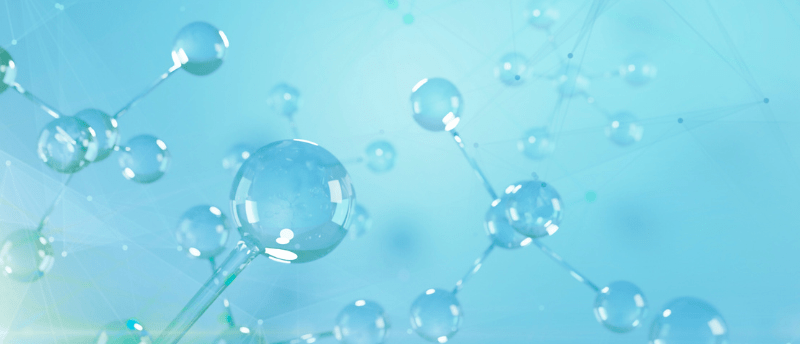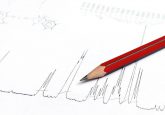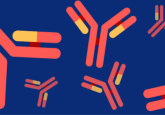Ion chromatography through the ages with Alexandra Zatirakha

Ion chromatography (IC) has established itself as a core technique in the bioanalytical community since its formal naming 5 decades ago. Evolving from ion-exchange chromatography, IC has developed into a more efficient, sensitive and rapid technique that offers complete automation. To mark 50 years since its formal naming, we spoke to Alexandra Zatirakha, Director of Chemistry at Thermo Fisher Scientific (MA, USA), about the evolution of IC and how AI/ML may shape its advancement in the next decade and beyond.
Interested in learning more about ion chromatography? Download our eBook here.
 Alexandra Zatirakha
Alexandra Zatirakha
Director of Chemistry
Thermo Fisher Scientific
Alexandra Zatirakha is currently a Director of Chemistry in the Ion Chromatography and Sample Preparation (IC/SP) business unit of Thermo Fisher Scientific. She is responsible for developing and implementing technical strategies that enable innovative research and development of new IC and Bio IC column products. Prior to joining Thermo Fisher Scientific, Alexandra spent 14 years as a scientist at Lomonosov Moscow State University (Russia), where she led a team of researchers focusing on the development of stationary phases for IC, hydrophilic interaction liquid chromatography, and mixed-mode stationary phases. Alexandra holds a PhD (2011) and Dr Habil. (2019) degrees in Analytical Chemistry from Lomonosov Moscow State University and has an extensive list of publications in the development of new chromatographic separation materials.
- Looking at the evolution of IC over the last 50 years, how have manufacturers addressed the increasing demands for sensitivity, automation and environmental sustainability?
- Which development in IC’s 50-year evolution do you consider the most revolutionary and why?
- The launch of Thermo Scientific’s Dionex Inuvion IC system in February 2024 marks another milestone in IC evolution. What are some key features that make this system stand out and how do these reflect broader industry trends in analytical chemistry?
- Post 2020, we’ve seen an increase in AI integration in IC analysis. How do you envision AI/ML further advancing IC in the next decade and beyond?
Looking at the evolution of IC over the last 50 years, how have manufacturers addressed the increasing demands for sensitivity, automation and environmental sustainability?
Over the past 50 years, every part of the chromatographic workflow has seen significant improvements, but the most notable gains in sensitivity have come from advances in detection methods, column technology and sample preparation techniques. Enhanced detection methods, such as electrochemical detection and the combination of conductivity detection with electrolytic suppression, provided a significant reduction of background noise leading to lower detection limits. Additionally, hyphenation of ion chromatography (IC) with mass spectrometry (MS) combined specificity of analysis with even higher sensitivity.
The introduction of high-efficiency columns with smaller particles and advanced stationary phase chemistries has improved separation capabilities and resolution, further lowering detection limits. Advances in sample preparation techniques focusing on the pre-concentration of trace components and matrix elimination have minimized interferences with target analytes. These innovations have enabled the detection of trace levels of ions in high ionic strength samples, which has made IC a crucial method in the field of environmental, industrial, pharmaceutical and food and beverage analysis.
Automation has also seen significant progress with the introduction of eluent generation technology, electrolytic suppression, automated sample preparation and injection, and advanced software for data processing and method handling, which today requires minimal user engagement.
In terms of sustainability, IC primarily uses aqueous eluents, making it more environmentally friendly compared to classical HPLC operating with organic mobile phases. Significant waste reduction can be achieved in IC by switching from traditional standard bore (4 mm) columns to microbore (2 mm) columns that operate at slower flow rates and by recycling the mobile phase. On top of that, sustainable manufacturing practices, reduced packaging and the use of recyclable materials are also becoming increasingly common.
Which development in IC’s 50-year evolution do you consider the most revolutionary and why?
There were several significant milestones, and it’s difficult to prioritize only one. However, as a scientist and a user, I think that the development of reagent-free IC (RFIC), where the eluent is electrolytically generated from deionized water in a well-controlled manner, was the most revolutionary and impactful. This technology minimizes user efforts and reduces variability and potential errors associated with eluent preparation, leading to more consistent and reliable results. It also brought the possibility of using gradients in IC to handle the analysis of samples containing the analytes with drastically different retention behavior, thus expanding the application areas of the method.
The evolution of IC column technology over the years has also been very impressive. Miniaturization of particle size and advancement of stationary phase chemistries provided high-performance IC solutions for numerous analytical tasks focused on the analysis of small ionic and ionizable compounds. Today Thermo Fisher is proud to be offering the most extensive IC column portfolio that covers a variety of needs across different industries.
The launch of Thermo Scientific’s Dionex Inuvion IC system in February 2024 marks another milestone in IC evolution. What are some key features that make this system stand out and how do these reflect broader industry trends in analytical chemistry?
IC has always aimed to meet industry needs and modern analytical laboratories today prioritize efficiency, automation, versatility, ease-of-use and reliability. The Dionex Inuvion IC system checks all these boxes.
The system is flexible and allows for easy upgrades, including the addition of an RFIC module for automated eluent generation. Secondly, it combines a user-friendly design for quick startup, minimum downtime and easy access to the components with enhanced reliability supported by advanced pump technology. Additionally, the instrument supports both chemical and electrolytic suppression — serving to improve sensitivity — and operates at high pressures up to 5,000 psi, allowing for more efficient, high-throughput separations. All these features make Inuvion a very versatile tool for handling a wide range of analytical tasks.
Post 2020, we’ve seen an increase in AI integration in IC analysis. How do you envision AI/ML further advancing IC in the next decade and beyond?
There is certainly great potential for using AI in IC analysis, although there are no commercialized solutions available yet. However, the number of publications covering the application of AI and machine learning in separation science has been increasing over the last several years. Examples include method development and optimization for achieving maximum efficiency and the highest resolution and productivity, as well as the development of models to predict the outcome of chromatographic analysis without extensive experimental work. AI/ML can also enhance data analysis and interpretation, system diagnostics, automated quality control, and sensitivity and specificity of analysis. As we see AI integration into multiple areas of our lives, it’s clear that separation science, including IC, will not be an exception. So, it’s very likely that in the future we will see commercialized solutions that will significantly change and advance chromatographic workflows.
Find more interview content here.
The opinions expressed in this interview are those of the interviewee and do not necessarily reflect the views of Bioanalysis Zone or Taylor & Francis Group.
In association with:





